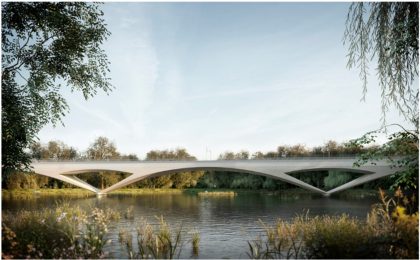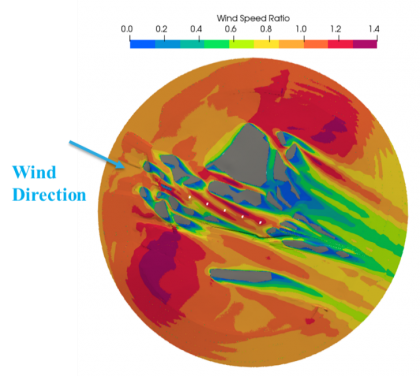Design, Engineering and Architecture
This theme covers the technical design, engineering and architecture for the HS2 Programme
Topic areas
Design, Engineering and Architecture Resources
Resources include papers, videos, research summaries and good practice documents produced by authors from across the HS2 Family to capture learning, good practice and innovation from the HS2 programme
-
Published on
Rethinking inclusive public toilets for HS2: Research evaluation and design to set an exemplar standard and best practice to meet the needs of multiple user groups
High Speed two (HS2) believes that an inclusive design approach will make the network easier for everyone to use. The design of stations and rolling stock will be based around the people using them and developing a better understanding of users and their needs is therefore key to defining the best solutions and to informing…
-
Published on
Bridging the gap between drainage design and BIM modelling
The design of the civil engineering works in High Speed Two (HS2) is a good example of what can be achieved when the Building Information Modelling (BIM) process is embraced. Central to the BIM process is a three-dimensional (3D) model that communicates the civil design to enable construction, asset management, operation and maintenance in a…
-
Published on
Development of the Streethay Cutting Design: From Retained to Open Cut
Streethay Cutting is a 2.5km long cutting that lies approximately 1km to the east of Lichfield, Staffordshire. It is at the northern part of HS2 Phase One, beyond which the route continues north to Curborough where the route splits: the mainline interfaces with Phase Two; and a spur connects to the West Coast Mainline at…
-
Published on
Managing uncertainty in ground conditions in design on a megaproject where ground investigation is highly variable
Ground conditions present one of the major areas of uncertainty and risk for High Speed Two (HS2) Phase One and have a significant impact on project affordability. The ability to effectively and appropriately manage ground risk in design in a consistent manner is complicated by the varying degrees of completeness of ground investigation which may…
-
Published on
Colne Valley Viaduct – developing a successful specimen design
The High Speed Two (HS2) Phase One route passes through a diverse and continuously changing British landscape. Structures along the route should be designed and constructed to respond to this diversity, becoming harmonious, memorable and fitting additions to their sites. This is particularly true for the Colne Valley Viaduct, which due to its scale, visibility…
-
Published on
Chiltern Tunnel cross passage durability design – response to challenges
The High Speed Two (HS2) Chiltern Tunnel will contain 40 cross passages (CPs), 38 of which are mined tunnels based on sprayed concrete lining (SCL) design. The Chiltern Tunnel and its cross passages are required to have a design life of 120 years, befitting of a structure of national significance. The 38 SCL cross passages…
-
Published on
HS2 track alignment change process through collaboration
In every high-speed railway project, the track alignment is one of the most, if not the most, critical element of design. The alignment is the basis that the rest of the civil works design is based on, with any change potentially having a significant knock-on impact. Hence the creation of a holistic contract-wide change control…
-
Published on
Minimisation of spoil to landfill from a collaborative approach to re-use on site
The High Speed Two (HS2) affordability challenge launched in November 2018 was the springboard to new ideas to change the scheme in the West Ruislip area. The idea was named the NEMO concept (New Excavated Material Opportunities). NEMO achieves a 3% carbon reduction, avoids 400k m3 of excavated material and removes 1.35M m3 of off-site…
-
Published on
Innovative passive smoke control in Copthall Tunnel
This paper describes a ventilation concept for Copthall tunnel which allows this 600m long tunnel to be naturally ventilated to control pressures, temperatures and control smoke in the event of a fire. A significant benefit of the tunnel solution for Copthall (when compared with the cutting previously planned at the hybrid Bill stage) is that…
-
Published on
An automated digital method for the assessment of crosswind safety for the HS2 route
Strong crosswinds have been known to overturn trains. High-speed trains can be especially at risk because the higher the train speed, the lower the critical wind speed at which overturning occurs. The risk of overturning varies at different points along a given route and is influenced by the exposure of the track (for example, on…



















